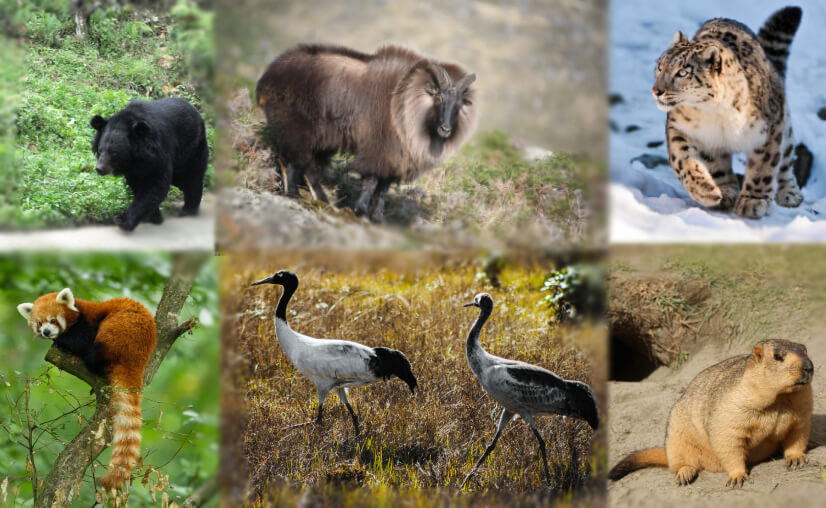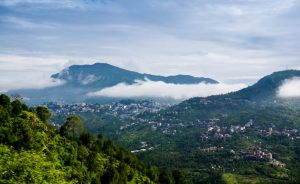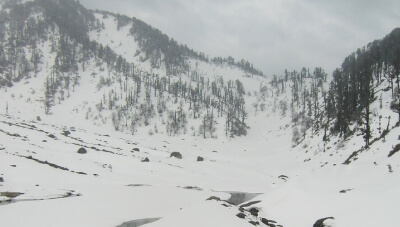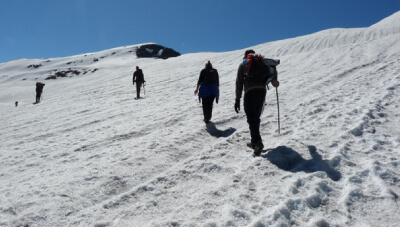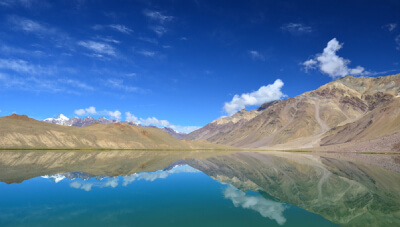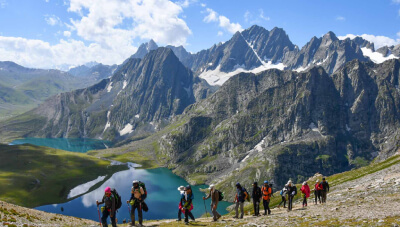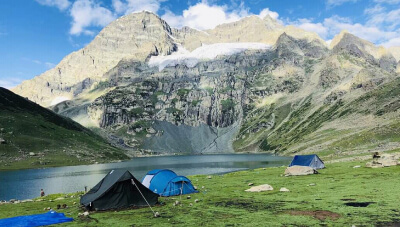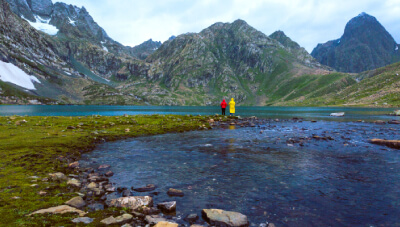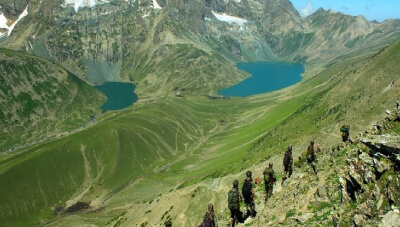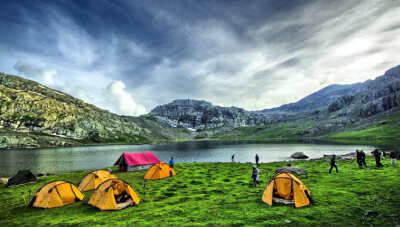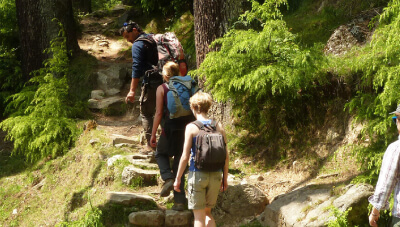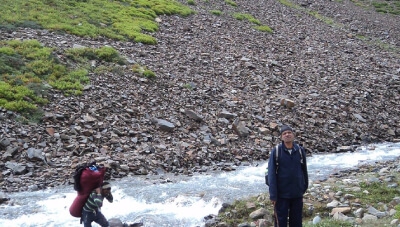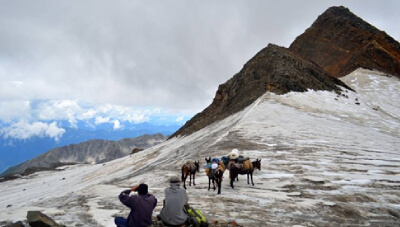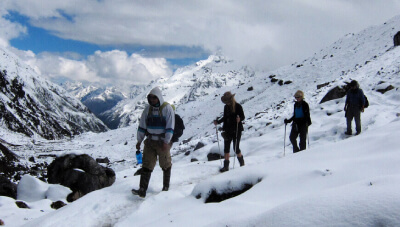The Indian Himalayan range stretches for almost 1,400 miles and seems to touch the skies at an elevation of 6,100 meters approx. It is home to some of the tallest peaks in the world, from Nanga Parbat (8,126 meters) and Mt. Everest (8,848 meters) to Kanchenjunga (8,586 meters). This Indian Himalayan Range is also home to a rich wildlife, but there are two things that make them special.
All the exotic animals found in the Himalayas, from mammals to reptiles, are not found anywhere else in the country, and secondly, a lot of these Himalayan animals are endangered. This means that catching a glimpse of the native animals of the Himalayas is both a privilege and a complete experience. From the elusive snow leopard to the playful Red Panda, each animal is special in its own way. While there are plenty of reasons to visit the Indian Himalayas, exploring its rich wildlife is as good as any.
In this blog, we bring you the most famous animals found in the Himalayas, spotting which is a complete experience in itself.
- Himalayan/Indian Black Bear
- Red Panda
- Snow Leopard
- Himalayan Yak
- Himalayan Tahr
- Himalayan Marmot
- Himalayan Monal Pheasant
- Black Necked Tibetan Crane
- Musk Deer
- Bharal
Himalayan/Indian Black Bear
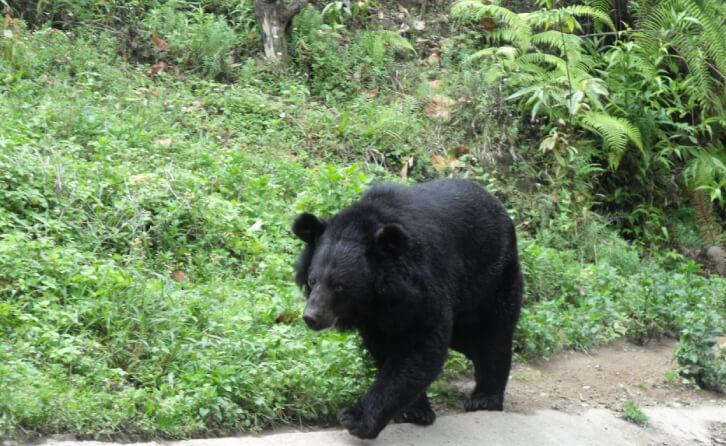
The Himalayan Black Bear, or Indian Black Bear, is a sight to come across, with its massive body, as it weighs 265 pounds. Bears are omnivores whose diet includes nuts, fruits, roots, honey and insects such as termites and beetle larvae. They are also known to prey on livestock in case of food scarcity.
Where can you see the Himalayan/Black Bear in India?
Red Panda
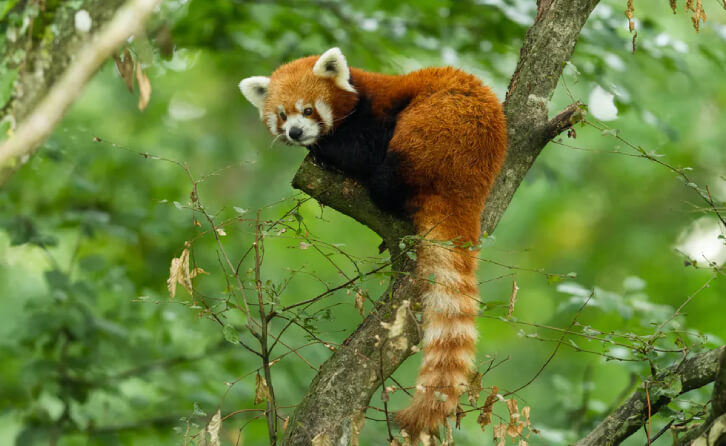
Red Panda is an endangered animal found in the Himalayas, whose total population is believed to be less than 10,000 mature individuals. This rare Himalayan animal is easily identified by its reddish brown fur, long shaggy tail and peculiar gait. Apart from bamboo, it also feeds on eggs, birds and insects. The red panda is also an excellent climber, and can be seen searching for food in trees. Catching this amazing animal in action is a rare delight.
Where can you see the Red Panda in India?
Snow Leopard
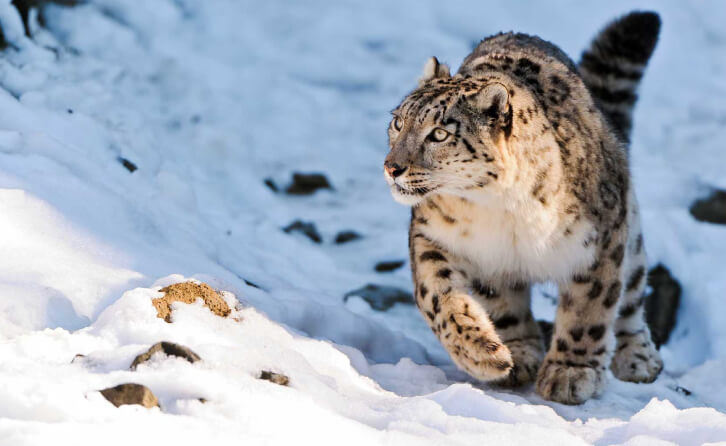
The snow leopard rejoices in its beauty and majesty. Catching a sight of the snow leopard in the Himalayas, with its long twisted tail and white gray coat with rose shaped dots and rosettes, fulfills your trip to the Indian Himalayas. The snow leopard is a carnivore and hunts its prey, including Himalayan animals like Blue Sheep, Himalayan Tahr & Wild Goat. There is even a trek named after it called the Snow Leopard Trek, which is done inside the Hemis National Park in Ladakh.
Where can you see the Snow Leopard in India?
- Hemis National Park, Ladakh
- Kumaon Hills, Uttarakhand
- Great Himalayan National Park, Himachal Pradesh
- Gangotri National Park, Uttarakhand
- Pin Valley National Park, Himachal Pradesh
- Nanda Devi National Park, Uttarakhand
- Khangchendzonga National Park, Sikkim
- Namdapha National Park, Arunachal Pradesh
- Govind Pashu Vihar National Park, Uttarakhand
Himalayan Yak
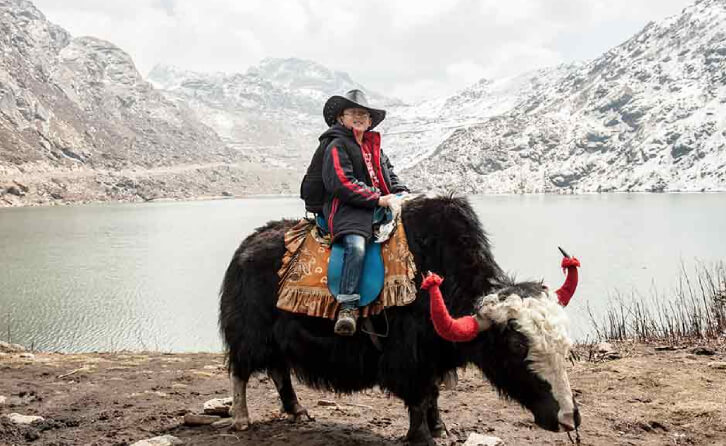
Among the native animals of the Himalayas, the Himalayan Yak, or the Domestic Yak, is perhaps the largest of all, weighing upto 500 kilograms. It stands almost 6 feet tall at the shoulder, and is characterised by a distinct hump at the shoulders. Despite their intimidating appearance, they have been domesticated for thousands of years, for their milk, fibre, and meat, besides serving as beasts of burden. Two products made from Yak’s milk, chhurpi and butter, are famous both among locals and tourists. Besides these, Yak safaris in Sikkim are also a favourite of tourists while visiting the Indian Himalayan states.
Where can you see the Himalayan Yak in India?
Himalayan Tahr
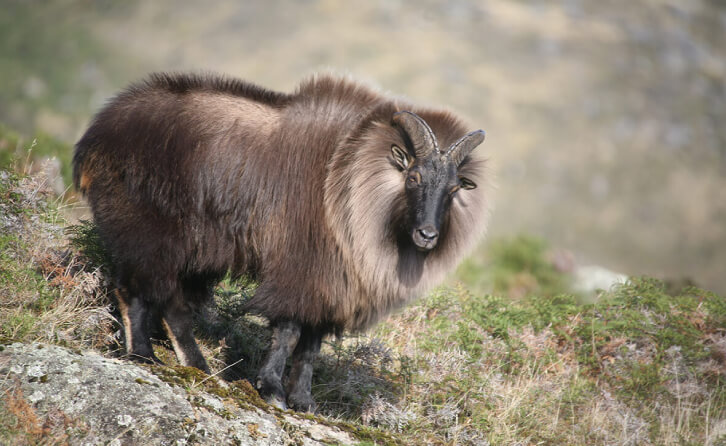
Himalayan Tahr, sadly, is counted among the endangered animals in the Himalayas, and is listed as “Near Threatened” on the IUCN Red List. Although it resembles a domestic goat, it belongs to the family of wild goats and inhabits the rugged wooden hills and mountain slopes. Their thick, reddish wool coats & thick undercoats help them to cope with the harsh temperatures of the Himalayas. They are mostly herbivores, with their diet consisting of grasses, leaves & fruits.
Where can you see the Himalayan Tahr in India?
Himalayan Marmot
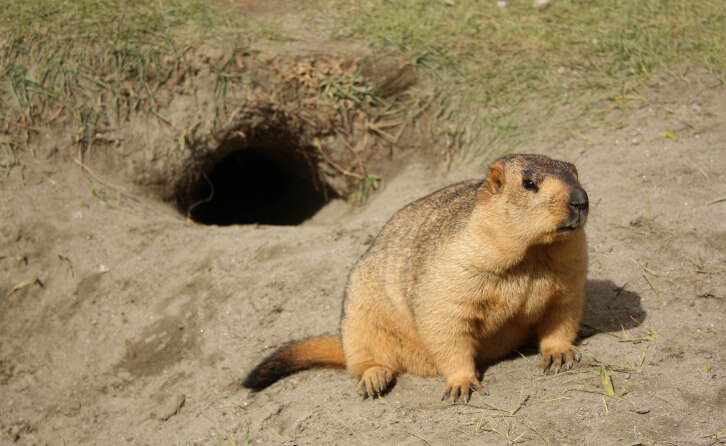
The Himalayan Marmot is a social animal, used to living in colonies. It is found across the Himalayan regions of India, Pakistan and Nepal, along with the Tibetan Plateau. This Himalayan animal is counted among the largest marmots in the world, and bears resemblance to a large housecat. They always live in colonies and excavate deep burrows which are shared by everyone during hibernation. An interesting fact about this amazing animal is that it was known to the ancient Greek writers as the gold digging ant, because gold chunks were mined from the site where the marmots dug their burrows.
Where can you see the Himalayan Marmot in India?
- Ladakh: Khardung La, Chang La, Tso Moriri Lake
Himalayan Monal Pheasant
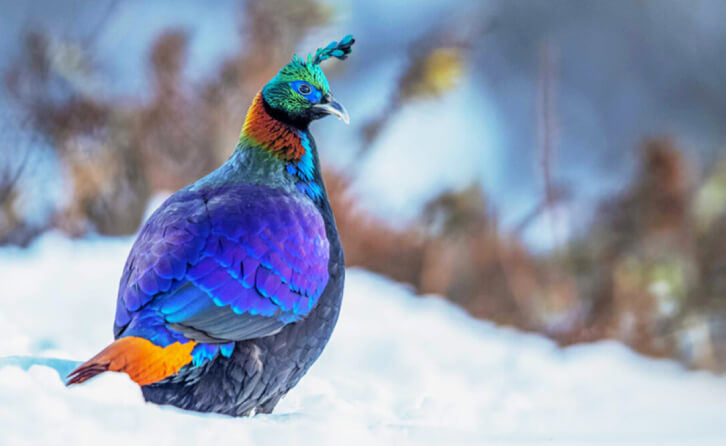
Nature has painted the Himalayn Monal Pheasant with various colours, and it is as colourful a bird as any. It is the national bird of Nepal and the state bird of Uttarakhand. Anybody who comes across this exotic animal found in the Himalayas will be impressed at first sight with its multicoloured plumage,metallic green crest, white rump and coppery feathers both on the neck & back. The females are identified by their white patch on the throat and white strips on the tail. Coming across this colourful bird while exploring the wildlife of Himalayas is a special experience.
Where to see the Himalayan Monal Pheasant in India?
- Uttarakhand
- Himachal Pradesh
Black Necked Tibetan Crane
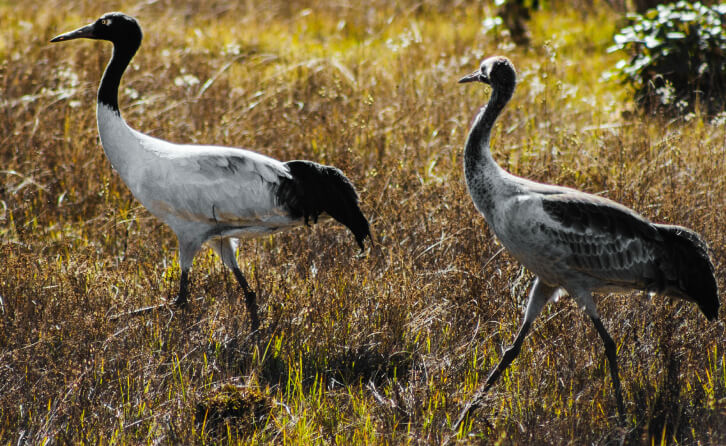
The Black Necked Tibetan Crane is revered in Buddhist traditions, it is the state bird of Kashmir & has a festival dedicated to it in Bhutan. It can be identified by its whitish gray body with a black head, red crown patch, black upper neck and legs, as well as a white patch behind the eye. Most of their time is spent in searching for food, with feeding time being early morning and late afternoon. If you want to spot them easily, plan a trip to the Indian Himalayan states in the winters.
Where to see the Black Necked Tibetan Crane in India?
- Arunachal Pradesh: Sangti Valley, West Kameng district, Zemithang & Chug Valley in Tawang district.
- Ladakh: Tso Kar Lake
Musk Deer
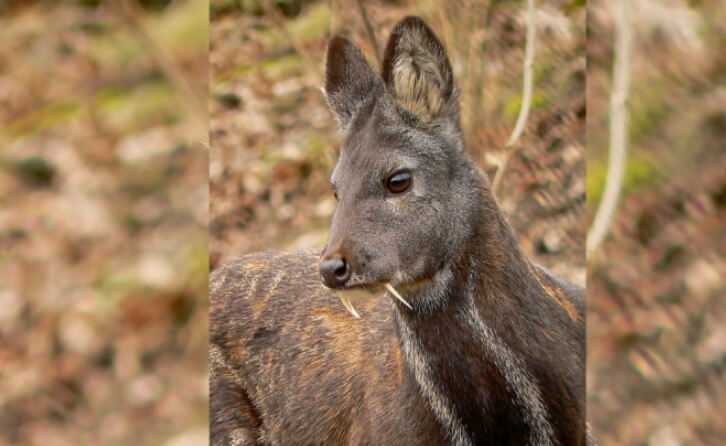
Musk Deer looks like a small deer, with a stocky physique and hind legs stronger than the front ones. They live in dense jungles in the hills, far away from humans. Like other deer, they are herbivores, with leaves, flowers, grasses, lichens and mosses being their primary sources of food. It is unfortunate that the musk deer came to be categorised as an endangered animal in the Himalayas as it was widely hunted for its musk gland, an ingredient used in the preparation of perfumes.
Where to see the Musk Deer in India?
- Kashmir
- Himachal Pradesh
- Sikkim
- Uttarakhand
- Arunachal Pradesh
Bharal
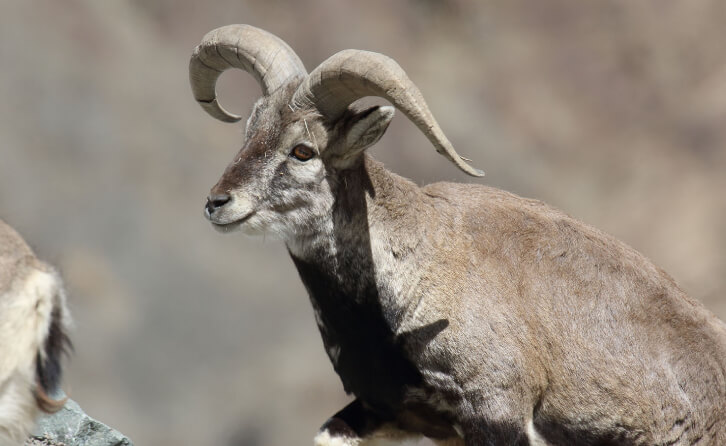
Bharal, one of the native animals of the Himalayas, is known by many names: blue sheep, Chinese Blue Sheep, Himalayan Blue Sheep or Naur. They stand 91 cm high at the shoulder, and weigh almost 75 kilos, with males being larger than females. Bharals are known to camouflage exceptionally well, a quality which serves them in times of danger from predators.
Where to see the Bharal in India?
- Gangotri National Park, Uttarakhand
- Hemis National Park, Ladakh
- Kalindikhal Pass Trek, Uttarakhand
- Sikkim
There you have it, the entire list of animals found in the Indian Himalayas, spotting which is a true delight. How many of these animals have you seen for far? Have you seen any at all? Let us know!
Photo Credit: Google Images
About the author
Vishwajit Sharma
Vishwajit Sharma is a travel writer, and writing is what he does, for
that is one of the few things that he can do! He loves reading & world
cinema, both of which nourish his soul & are an escape into another
world. Born in Darjeeling, he loves the hills & hopes to retire there
ultimately!

 +91-9212553109
+91-9212553109 Plan Your trip
Plan Your trip

